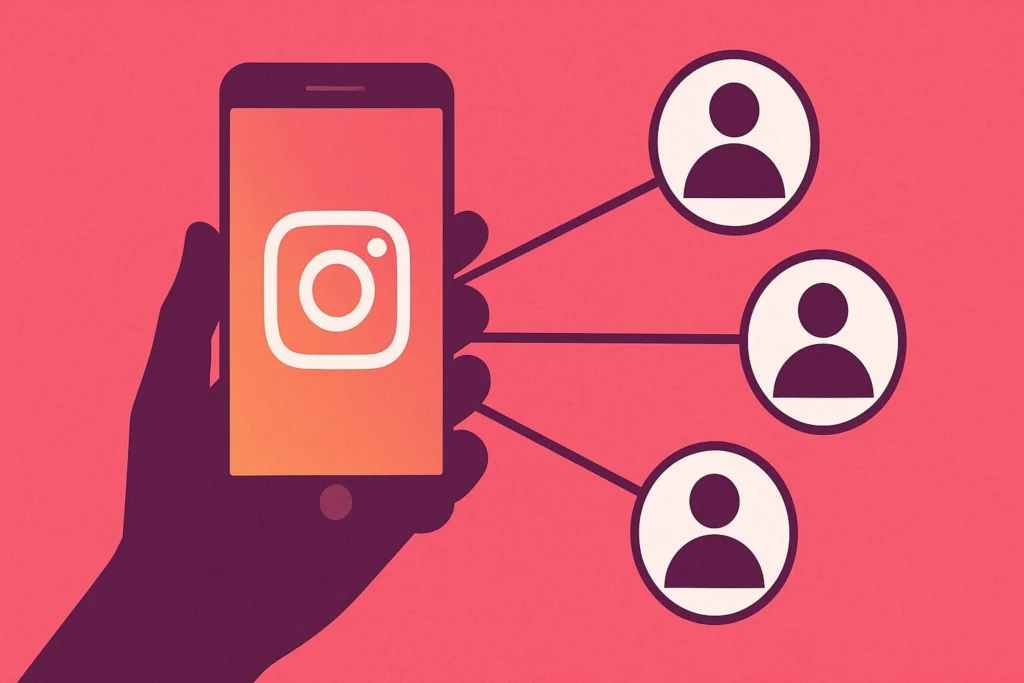Maximizing brand alignment on social media involves strategic monetization approaches that drive both engagement and revenue. Collaborations with influencers are pivotal, as they enhance credibility and yield a 6.5x ROI. Sponsored content opportunities further amplify reach, connecting brands with diverse audiences. Exclusive partnerships expand market reach while fostering customer loyalty. Customized product collaborations and social media shops offer unique avenues for engaging consumers, aligning offerings with purchasing behaviors. Affiliate marketing and user-generated content strategies boost engagement through authentic and credible promotion. Each tactic strategically positions brands for success, revealing further depths of potential when explored thoroughly.
Key Takeaways
- Collaborate with micro-influencers for higher ROI and authentic brand engagement.
- Leverage sponsored content to enhance brand visibility and access niche markets.
- Utilize social media shops to boost conversion rates through shoppable posts.
- Implement affiliate marketing strategies for significant engagement and mutual growth.
- Encourage user-generated content to increase brand engagement and reduce content creation costs.
Influencer Collaborations
Influencer collaborations have emerged as a pivotal strategy in the dynamic landscape of social media marketing, driven by the persuasive power of trust. As traditional advertisements struggle to capture consumer attention, influencer partnerships have gained traction, enhancing brand visibility and engagement rates.
With 70% of consumers favoring influencer recommendations, these collaborations offer brands a credible avenue to amplify their voice and resonate with target audiences. Micro-influencers, in particular, provide a robust return on investment, often outperforming their larger counterparts by 6.5 times, which underscores their value in niche marketing strategies.
The authenticity embedded in influencer collaborations enables brands to engage new demographics effectively, fostering brand awareness and credibility. Such alliances not only lead to increased sales but also cultivate customer loyalty, a fundamental aspect of sustainable business growth.
By leveraging the established community trust of influencers, brands can seamlessly align their marketing strategies with the values of their audience, leading to monetizing brand alignment. Research highlights that over 92% of marketers affirm the efficacy of influencer partnerships in enhancing brand awareness and engagement, reaffirming their integral role in contemporary marketing.
Consequently, influencer collaborations are indispensable for brands seeking to build long-term relationships and drive market success.
Sponsored Content Opportunities
Sponsored content opportunities present a compelling avenue for brands to maximize engagement potential and enhance visibility by leveraging influencer and publisher partnerships on social media platforms.
With an average engagement rate of 3.21% on platforms like Instagram, these collaborations prove effective in connecting brands with their target audiences.
Additionally, the potential for a 6.5 times return on investment underscores the importance of measuring ROI effectiveness, making this strategy not only lucrative but essential for successful brand alignment in the digital age.
Maximizing Engagement Potential
As the digital landscape continues to evolve, the strategic use of sponsored content emerges as a critical component for brands aiming to maximize engagement potential on social media platforms.
With projected revenues of $6.78 billion by 2024, sponsored content is not only a burgeoning facet of social media marketing but also a pivotal tool for brand alignment. By integrating influencer marketing, brands can enhance brand awareness and engagement among target audiences, evidenced by a 6.5x return on investment. Such collaborations serve as a strategic advantage, enabling brands to effectively capture audience attention and reach new demographics.
The impact of sponsored content is further highlighted by the impressive average engagement rate of 3.21% on Instagram posts. This statistic underscores the potential of sponsored content to engage audiences and improve brand perception.
For marketers, the endorsement of sponsored content by 92% of their peers is a proof of its efficacy in enhancing brand awareness. Consequently, aligning brand strategies with the dynamic capabilities of sponsored content not only maximizes engagement potential but also positions brands to navigate the intricate landscapes of social media marketing with enhanced precision and impact.
Enhancing Brand Visibility
A growing number of brands are recognizing the potential of sponsored content to greatly enhance their visibility on social media platforms. By tapping into the impressive engagement rate of 3.21% on platforms like Instagram, brands are effectively leveraging this tool to increase brand awareness and audience reach.
Sponsored content serves as a strategic avenue, enabling companies to connect with diverse demographics and niche markets, thereby expanding their presence. Collaborating with influencers for sponsored posts not only boosts brand exposure but also enhances credibility.
With a notable 6.5x return on investment, these partnerships are a powerful strategy for monetizing brand alignment. Influencers, with their dedicated follower base, facilitate authentic engagement, further solidifying brand visibility. In this regard, 92% of marketers endorse sponsored content as an effective method to amplify brand awareness and engagement among target audiences.
The projected revenue from sponsored content reaching $6.78 billion by 2024 underscores its significance as a growth avenue. For brands seeking to optimize their visibility, these opportunities offer immense potential.
Measuring ROI Effectiveness
Understanding the effectiveness of sponsored content requires a strategic approach to measuring return on investment (ROI). As marketers anticipate a revenue surge to $6.78 billion by 2024, the emphasis on brand awareness through sponsored content has never been more pronounced. Central to this strategy is the alignment of key performance indicators (KPIs) with business objectives to maximize both engagement and revenue generation. The 6.5x ROI from collaborations on sponsored posts illustrates their financial effectiveness, offering substantial opportunities for growth.
To optimize outcomes, leveraging analytics to scrutinize performance is vital. Platforms like Instagram, with a notable engagement rate of 3.21%, underscore the potential for dynamic audience interaction. Effective measurement involves continuous data-driven adjustments, ensuring that strategies remain aligned with evolving market trends and consumer behaviors.
| Metric | Insight |
|---|---|
| Projected Revenue | $6.78 billion by 2024 |
| Engagement Rate | 3.21% on Instagram |
| ROI from Collaborations | 6.5x |
Exclusive Brand Partnerships
Exclusive brand partnerships present a strategic avenue for unblocking unique collaborations that considerably enhance market credibility.
By aligning with complementary brands, companies can leverage each other’s strengths, thereby expanding their audience reach and fostering stronger customer trust.
Such partnerships not only amplify brand visibility but also create a cohesive narrative that resonates across social media platforms, ultimately leading to increased consumer engagement and loyalty.
Unlock Unique Collaborations
Harnessing the power of exclusive brand partnerships opens up a domain of unique collaborations that greatly enhance a brand’s presence in the social media landscape. By forming co-branding initiatives, companies can strategically align with complementary brands, tapping into each other’s customer bases and crafting cohesive messaging. This not only results in increased engagement rates—potentially rising by as much as 20%—but also fosters innovative marketing campaigns that resonate with shared audiences. Such collaborations amplify brand perception, ensuring that each partner reaps substantial financial benefits.
| Benefit | Description | Impact on ROI |
|---|---|---|
| Expanded Customer Base | Access to partner’s audience | Higher sales |
| Increased Engagement | 20% rise in engagement rates due to aligned interests | Enhanced visibility |
| Cohesive Messaging | Unified brand messages across platforms | Strengthened brand |
| Financial Returns | 6.5x return on investment from strategic partnerships | Significant profits |
Research underscores that strategic alignments between brands can lead to a 6.5x return on investment. This highlights the potential financial benefits, making exclusive collaborations a lucrative avenue in social media marketing. By prioritizing these partnerships, brands can not only enhance their market visibility but also solidify their standing in the competitive digital sphere.
Enhance Market Credibility
Strategic brand partnerships serve as a powerful catalyst for enhancing market credibility, a critical asset in today’s competitive landscape. Exclusive collaborations not only bolster brand recognition but also engender trust, as 70% of consumers are more likely to trust brands perceived to have strong alliances.
By aligning with complementary brands, companies can tap into new demographics, thereby expanding their market reach and amplifying their message across social media platforms. This approach fosters cross-promotion, which can yield a remarkable 6.5x return on investment.
These partnerships are not merely about shared visibility; they enable co-branding initiatives that create distinctive product offerings, resonating with target audiences and setting brands apart in saturated markets.
Cohesive messaging through strategic alignments enhances overall brand recognition, nurturing customer loyalty. Within this dynamic, social media engagement becomes pivotal, as it serves as a conduit for amplifying the impact of these alliances.
- Boosts brand credibility through trusted collaborations
- Expands market reach by accessing new demographics
- Enhances brand recognition and customer loyalty via strategic alignments
- Increases social media engagement, driving brand awareness
Ultimately, exclusive brand partnerships serve as a cornerstone for building enduring credibility and achieving sustainable growth.
Customized Product Collaborations
Often, brands find that customized product collaborations serve as a powerful strategy to capture the attention of their target audiences and foster deeper engagement. By creating unique offerings tailored to consumer preferences, brands enhance customer loyalty and differentiate themselves in crowded markets.
These co-branded products not only appeal to existing customers but also attract new ones, leveraging insights to align with consumer tastes. As research indicates, 78% of consumers express interest in purchasing co-branded products, highlighting substantial potential for increased sales.
Collaborating with complementary brands further amplifies these benefits by enabling businesses to tap into each other’s customer bases, thus expanding reach and visibility. This strategic alignment can result in innovative product launches that not only generate significant buzz but also create opportunities for cross-promotional marketing.
Such initiatives not only reinforce brand alignment but also fortify social media monetization efforts by capitalizing on shared audiences and enhanced engagement.
Customized product collaborations, consequently, are not merely about product development; they represent a robust approach to sustaining brand relevance and driving growth. By thoughtfully leveraging these collaborations, brands can effectively navigate the complexities of modern consumer landscapes and achieve lasting success in their respective markets.
Social Media Shops
Building on the momentum of customized product collaborations, brands are increasingly turning to social media shops as a dynamic avenue for monetization and consumer engagement.
In a digital age where seamless experiences are paramount, integrating social media shops into platforms like Instagram and Facebook provides brands with the opportunity to showcase products directly to their audience. This approach not only enhances engagement but also capitalizes on the social media-driven product discovery process, with approximately 70% of shoppers utilizing Instagram for this purpose.
By employing shoppable posts, brands can considerably boost conversion rates, making it easier for users to shift from browsing to purchasing. Additionally, optimizing product descriptions for both engagement and SEO guarantees broader audience reach and visibility.
Visual merchandising strategies, such as employing color psychology and maintaining cohesive branding, are essential in capturing and retaining consumer interest. These elements contribute to a visually appealing online store environment that encourages product exploration and purchase.
- Capture potential customers at the awareness stage.
- Enhance user engagement through seamless purchasing.
- Boost conversion rates with shoppable posts.
- Drive sales with cohesive branding and visual merchandising.
Social media shops are a pivotal tool in the modern marketing landscape, enabling brands to effectively align and monetize their offerings.
Affiliate Marketing Strategies
Affiliate marketing encapsulates a dynamic synergy between brands and external promoters, driving mutual growth through strategic partnerships. This method capitalizes on social media profiles to enhance brand alignment, leveraging platforms where 77% of marketers find significant engagement in affiliate promotions. The importance of content marketing is paramount, as high-quality content aligned with brand identity can achieve conversion rates up to 10% higher than traditional methods. Such strategies are further amplified by influencer recommendations, with 49% of consumers relying on them for purchasing decisions, underscoring the value of authenticity in promotions.
To effectively implement affiliate marketing, brands must integrate performance tracking tools to analyze engagement metrics. This allows for strategic adjustments, optimizing ROI and improving conversion rates over time. Below is a summary table highlighting key elements:
| Element | Importance | Outcome |
|---|---|---|
| Social Media Profiles | Essential for engagement | Enhanced brand visibility |
| Content Marketing | Aligns with brand identity | Higher conversion rates |
| Influencer Recommendations | Builds consumer trust | Increased purchase likelihood |
| Performance Tracking | Analyzes strategy effectiveness | Improved ROI and engagement metrics |
User-Generated Content
In the evolving landscape of digital marketing, where affiliate marketing has proven effective, brands are increasingly turning to user-generated content (UGC) as a powerful tool for fostering deeper engagement and authenticity.
UGC enhances brand engagement by 28%, creating a community atmosphere where authenticity thrives, leading to raised brand awareness. This approach not only resonates with consumers but greatly influences their purchasing decisions, with 79% indicating that UGC impacts their choices.
The strategic use of UGC offers a 20% increase in return on investment compared to traditional marketing avenues. This underscores its efficacy in driving consumer conversions by leveraging the inherent trust consumers place in peer-created content.
Social media posts utilizing UGC can achieve a 4.5% higher engagement rate, resulting in increased visibility and reach.
Moreover, brands benefit from reduced content creation costs by harnessing customer creativity, thereby cultivating a diverse and relatable content portfolio. This not only enriches the brand’s narrative but also enhances its relatability and appeal.
- Increased brand engagement and authenticity
- Higher return on investment through strategic UGC use
- Great influence on consumer purchasing decisions
- Reduction in content creation costs via customer creativity
Frequently Asked Questions
How to Monetize Through Social Media?
Monetizing through social media involves leveraging influencer partnerships, sponsored content, and affiliate marketing. Integrating user-generated content, social media ads, and subscription models enhances brand collaborations, product placements, and digital products, fostering community engagement and boosting revenue streams.
What Is Brand Strategy Alignment?
Brand strategy alignment involves harmonizing brand vision, visual identity, and messaging consistency with competitive analysis, ensuring a compelling value proposition for the target audience. This fosters brand loyalty through storytelling techniques, influencer partnerships, and optimized engagement metrics.
How Do You Approach Creating a Social Media Strategy for a Brand?
To create a social media strategy, conduct audience analysis, develop content planning, select platforms, and establish engagement tactics. Monitor performance metrics, foster influencer partnerships, guarantee visual consistency, refine tone development, optimize campaign timing, and prioritize community building.
How to Create a Brand Identity on Social Media?
Creating a brand identity on social media involves integrating visual storytelling, audience engagement, and consistent messaging. Select platforms wisely, maintain tone consistency, define content themes, emphasize brand aesthetics, foster community building, leverage influencer partnerships, and encourage user-generated content.
Conclusion
The outlined strategies for monetizing brand alignment on social media highlight the dynamic interplay between brands and digital platforms. By leveraging influencer collaborations, sponsored content, and exclusive partnerships, businesses can effectively amplify their reach and engagement. Customized product collaborations and social media shops offer innovative avenues for direct consumer interaction. Additionally, affiliate marketing and user-generated content foster community-driven promotion, enhancing brand authenticity and trust. Collectively, these strategies underscore the importance of strategic alignment in optimizing brand visibility and profitability in the digital age.




